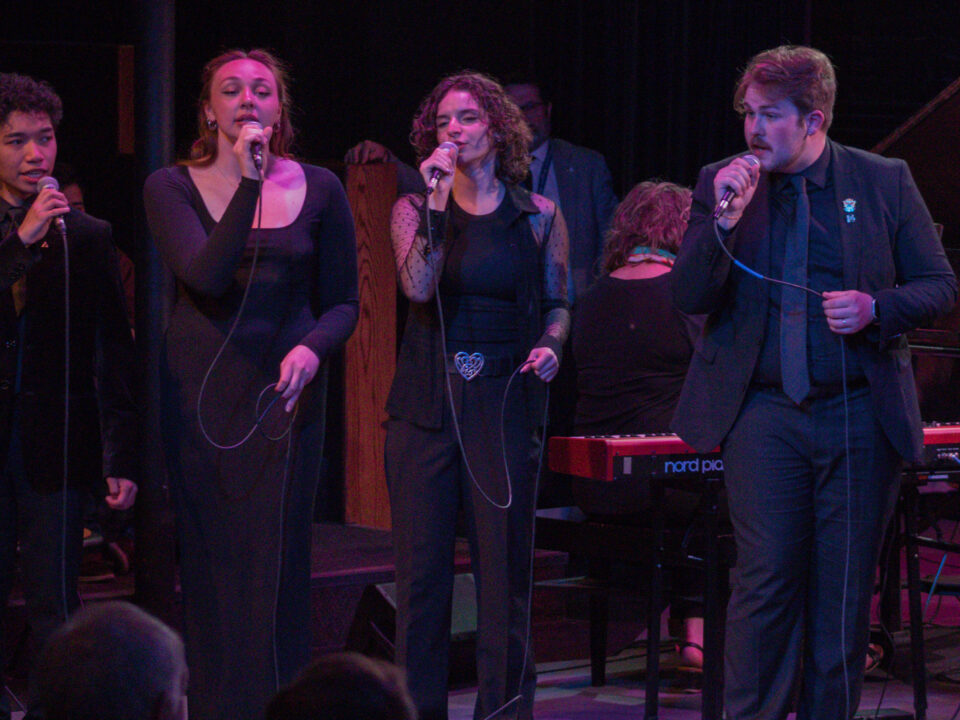Loyalty, Love, Language, and Loss: A Review of the Mini-Series “Shōgun”

Graphic by Rachel Fratt
“Shōgun,” which first aired back in February of this year, just released its final episode on April 23. The series, which is based on the novel by James Clavell, is a sweeping epic set during the end of the Sengoku Period in Japan and follows the journey of Lord Yoshii Toranaga, whose enemies have united against him, John Blackthorne (also referred to as Anjin), an Englishman who shipwrecks nearby, and Toda Mariko, the translator brought to communicate on behalf of the two of them.
Spoilers Ahead. Content Warning: Talks of suicide.
So much is pulled off in this epic; however, one thing that’s truly remarkable is how true to history the show is. The show has a podcast that was released along with each episode and not only fed our generation’s love of the audio medium, but also gave a lot of amazing insight into the creation of the series. They mention all different factors that went into making sure this show maintained authenticity. For example, the script for this show was originally all written in English. It then went through an extremely lengthy translation process as it was sent to be translated into modern Japanese, then translated again by someone who specialized in dialect spoken during the Sengoku Period when this show takes place. That translation was then what was used to generate the captions used throughout the show.
Another example was changing one of the book’s details which was Blackthorne sharing his knowledge of this specific canon from him sharing his knowledge of a specific type of gun as that type of weapon was already in use in Japan during this time. All truly amazing lengths that show how much the creators of “Shōgun” wanted to honor the story they were portraying.
The cinematic nature of this series also stands out. Intimate close ups pair with as much awe as the sweeping landscape shots. The score is also tactfully used throughout to evoke true tension and suspense. Especially in the scenes of fighting, one of the composer’s notes the purposeful use in having the score mimic that of a horror feature rather than an action piece was a powerful choice as it highlighted the truth, the brutality and terror in the violence occurring.
But what truly sets “Shōgun” apart as a series is its story. While this narrative is centered around this central external conflict of Toranaga fighting to keep from being executed by his enemies and using Blackthorne and Mariko as tools to accomplish this, there’s so much more going on within the internal conflicts of each character. Each character has their own motivations that stem from a certain loyalty either to another like Mariko’s loyalty to Toranaga and her religion, while others are to themselves, like Toranaga and Blackthorne who are each seeking to elevate themselves.
Despite this focus on furthering themselves, there’s truly strong bonds that get built throughout this series between characters. In the last episode, Toranaga reveals that the real reason he ended up keeping Blackthorne around was because he made him laugh. It’s a quaint and wholesome moment as Toranaga stands at the cliffs hoping for a better, more peaceful future for Japan and in that future, he sees Blackthorne, someone who’s relationship began from a very volatile place. Similarly, Blackthorne and Mariko’s relationship is one of the highlights of this series and some of my favorite moments are the ones they share together.
In the podcast, they touch on what they call “the sexiest scene of the series” which is when Mariko takes Blackthorne to a brothel and though there’s no physical intimacy between the characters, Mariko ends up translating for the woman that’s been paid to sleep with Blackthorne. The blocking of this scene has the women getting up and sitting beside Mariko, the camera then slowly panning as Mariko translates her words until the woman is out of frame and Mariko is no longer translating but revealing her true feelings for Blackthorne. The love shared here is one of the side plots of this narrative, yet it holds so much power in the motivations of these characters going forward.
Language is also a huge factor in this series and is especially highlighted through Mariko’s character whose sole job is to repeat and interpret other’s words as honestly as possible. Blackthorne is key in this aspect of language, as he’s not only who Mariko translates for, but also someone who has no regard for the words he speaks. This becomes evident when he hangs a dead bird up to rot and says that anyone who touches it should die. It’s a slight, off the cusp remark that he didn’t actually mean, however, when the bird is taken down by the gardener, Fuji, who was assigned to Blackthorne to tend to his needs, kills him. Blackthorne, as well as the audience, learns a powerful lesson here about the power of words and the validity they can hold. Similarly, Mariko shows its power by using language as a way to fight without ever drawing her sword. Her character often recites poetry when speaking and brings beauty to the language. Her words are also her legacy and what those around her remember her by most, which is made clear in the final episode.
“Flowers are only flowers because they fall,” one of the truly beautiful lines from one of her poems spoken in the final episode by her childhood friend Ochiba. It’s one that’s a testament to the show’s portrayal of loss which is unconventional and at first hard to wrap your head around as a modern-day viewer.
The era this series takes place is one that’s been plagued with death both through constant battling as well as natural disasters, such earthquakes like the one seen in episode five. There is a level of desensitization that is clear in these characters; however, there is also just a mindset that is held amongst them which is the respect for death. Seppuku is also a very important part of this culture, which was a form of ritualistic suicide seen as a high honor during this era. Many characters perform seppuku throughout the series, including Mariko who attempts it in episode nine before being stopped. This comes full circle back to that line of poetry as Mariko’s words point out the viewpoint that life is only worth living because of the knowledge of death.
The one area I felt the show lacked and I feel this comes from its dedication to be as true to the book as possible. Novels, however, are different storytelling mediums than television, and as a result the pacing doesn’t always translate. Certain episodes felt to slow down the pacing a bit such as episode seven. While crucial information was still revealed, and the characters performances were still captivating enough to hold my interest, there was more exposition than concrete plot points to move the story along.
Similarly, the last episode was one I felt could have been combined with episode nine, which is one of my favorites in the whole series. Where the finale begins is where the penultimate episode seemed destined to end, with the death of Mariko. By breaking it up, there was this sense of false hope I had that maybe she wouldn’t have died,] when she did; however, in the opening few frames, it left me disheartened for the first part of the finale as I debated whether that was the death her character deserved or not. Had these last two episodes been combined, with Mariko’s death serving as the climax of the episode, I think that would’ve served her character’s arc better and made that scene with Fuji and Blackthorne on the boat saying goodbye to her that much more impactful.
“Shōgun” comes at a pivotal shift happening in culture as a clear shift of television being able to not only match but rival cinema. Stories now aren’t limited to traditional media means. Books especially can be fully represented in a mini-series format yet reach the same if not a bigger audience than a feature. “Shōgun” further proves this by its retelling of this beloved story in a truly monumental way.
Review Rewind
Rather than ending with a review rewind as I usually do, for my last review with The Leader, I wanted to end with a reflection on some of my favorite pieces I’ve put together over the years. One of the first things that stands out are my Christmas and Halloween lists. These were so fun to put together, and I loved getting to share unknown classics like “Eloise at Christmastime” and campy, song-filled features such as “Little Shop of Horrors.” Not to mention that doing these reviews also finally gave me the push to watch all the Oscar best pictures and check that off my bucket list.
As far as favorites go, “Past Lives” still comes out on top for me as not only one of my favorite reviews but overall favorite film of the past two years. Looking back, I definitely would change my rating from 4 stars to 5. On the other side of the spectrum, I still stand by my Barbie review despite many people severely disagreeing with my dislike of it. Getting to write these reviews also had me looking for new and unique pictures to watch rather than just the box office hits. In doing so I got to explore great features such as “Monkey Man,” “Rye Lane,” and “Call Jane,” all of which I still find to be impressive films.
I’m truly going to miss hoping on my soapbox twice a month, however, if anyone is interested in continuing to hear my ramblings, I can be found on the letterbox at Sag1459. This has truly been an amazing experience and I can’t wait to see what the next chapter brings.


